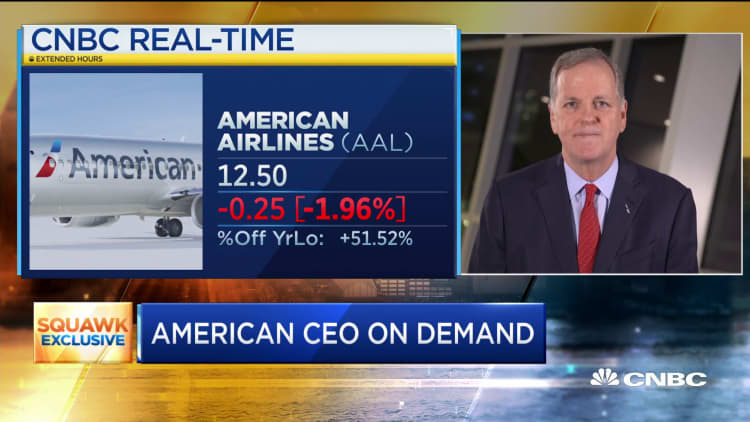Airlines spent the first few weeks of the coronavirus pandemic slashing routes and parking hundreds of planes to cut costs as passenger numbers fell to the lowest levels since the 1950s.
U.S. airlines are now launching new routes, hoping they can turn a recent rebound in air travel into desperately needed revenue after losses topped $20 billion this year. Some airlines are moving into some of what are normally a few of the country's most congested airports, hoping to make inroads as air traffic is relatively low.
"It's a game of musical chairs," said Robert Mann, an airline industry analyst and former airline executive.
JetBlue Airways last month announced two dozen new routes, including several from United Airlines' hub at Newark Liberty International Airport in New Jersey to the Caribbean. Southwest Airlines last week unveiled plans to fly into Houston's George Bush Intercontinental Airport where United dominates as well as Chicago O'Hare International Airport, a United and American Airlines stronghold.
Meanwhile, United launched a host of new routes to Florida for the holiday season and is aiming to return to New York's John F. Kennedy International Airport early next year after a more than five-year absence. United this weekend plans to extend those nonstop flights to Florida into the first quarter of 2021 for later winter and early spring travel.
"It has been all about cash burn over the last six months," Ankit Gupta, United Airlines' vice president of domestic network planning. "Going forward, hopefully we will be able to change those metrics now that we are trying to get out of survival mode and rebuild the airline again."
The pandemic has turned the airline business on its head, already costing more than 50,000 jobs in the U.S. Business travel, long the backbone of airline revenue, has all but halted, and carriers have shifted their efforts to courting price-sensitive leisure travelers seeking sun and outdoor destinations mostly in the U.S., where they can physically distance and avoid travel restrictions that has left much of the world off limits.
Airlines are starting to see results.
"During the quarter, we started to see signs of a slow but steady recovery in passenger demand," said American Airlines President Robert Isom on an earnings call on Thursday.
Getting it right is crucial. Delta Air Lines last week posted a $5.4 billion net loss for the third quarter while United had a loss of $1.8 billion. American Airlines and Southwest on Thursday reported losses of $2.4 billion and $1.2 billion, respectively, for the quarter. It was Southwest's biggest quarterly loss ever. Alaska Airlines lost $431 million. All five carriers have trimmed their daily cash burn rates, a trend they expect to continue, but it isn't clear when exactly they will stop hemorrhaging money.
United's Gupta said the airline's bookings have climbed since coronavirus cases spiked in the summer and have lately held steady despite another uptick in infections.
"This is very different from what we saw in early July. It's a little surprising," he said.
Sudden shifts in consumer sentiment are challenging to airlines. Customers are booking much closer to their flight time. Gupta said customers would normally book domestic flights 90 to 120 days before departure and now that's half that.
In response to the uncertain nature of the virus and subsequent consumer behavior changes, Gupta said routes are getting planned much closer to launch. For example, the carrier pre-pandemic would aim to announce domestic and Caribbean routes about six months in advance but like bookings, it's in about half that time.
"During the pandemic we've been forced to make these decisions closer in," he said.
A recovery in air travel is still a long way off. While the Transportation Security Administration on Sunday screened more than 1 million people for the first time since March, volumes have averaged 835,573 a day this month, down 65% from the 2.4 million a day during the first 20 days of October 2019.
"Even though reducing costs is really important, ultimately, to get out of this we need more traffic, more revenue on board, so putting those assets into new markets, is the name of the game," Andrew Watterson, Southwest's chief commercial officer, said at an industry conference last week. Southwest is also adding flights to American Airlines' hub in Miami.
American's CEO Doug Parker said on Thursday's earnings call that when air travel demand "does come back we're ready to take on competition no matter where it comes."
The expansion risk could be worth it, some industry watchers say.
The airplane is "sitting on the ground otherwise," said Brett Snyder, a former airline manager who runs an air travel assistance company, Cranky Concierge, and writes the Cranky Flier blog. "This is a great time to try new things," he added. "Maybe it's short term and maybe you find something that works."



